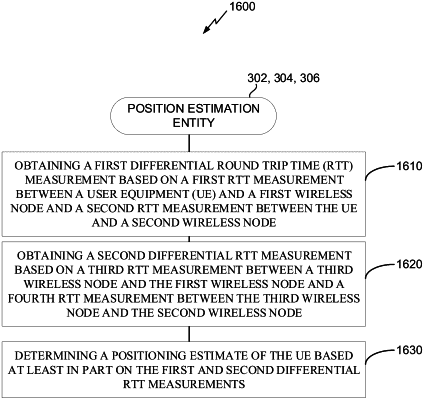| CPC H04W 64/006 (2013.01) [G01S 5/0268 (2013.01); G01S 5/10 (2013.01); G01S 5/14 (2013.01); H04W 56/009 (2013.01)] | 26 Claims |

|
1. A method of operating a position estimation entity, comprising:
determining at least one shared requirement for both of a first differential timing (DT) procedure of a double differential timing (DDT) procedure and a second DT procedure of the DDT procedure,
wherein the DDT procedure corresponds to a DD time difference of arrival (DD-TDOA) procedure, and:
the first DT procedure provides a first time difference of arrival (TDOA), the first TDOA being a difference at a target user equipment (UE) between respective signals from first and second wireless nodes or at the first and the second wireless nodes between a signal from the target UE, and
the second DT procedure provides a second TDOA, the second TDOA being a difference at a reference wireless node between respective signals from the first and the second wireless nodes or at the first and the second wireless nodes between a signal from the reference wireless node, and
the DDT procedure provides a difference between the first TDOA and the second TDOA, or
wherein the DDT procedure corresponds to a DD round trip time (DD-RTT) procedure, and:
the first DT procedure provides a first differential round trip time (RTT), the first differential RTT being a difference between a first RTT between the target UE and the first wireless node and a second RTT between the target UE and the second wireless node,
the second DT procedure provides a second differential RTT, the second differential RTT being a difference between a third RTT between the reference wireless node and the first wireless node and a fourth RTT between the reference wireless node and the second wireless node, and
the DDT procedure provides a difference between the first differential RTT and the second differential RTT, and
transmitting, to at least the target UE and the reference wireless node, requests to perform the DDT procedure along with an indication of the at least one shared requirement for the DDT procedure.
|